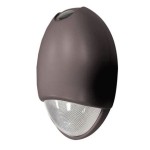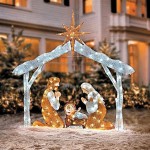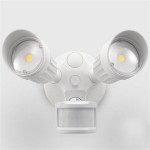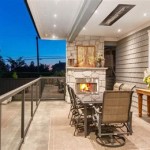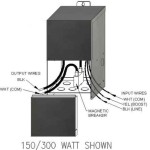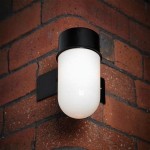Outdoor Fashion Photography Lighting Techniques
Outdoor fashion photography presents a unique set of challenges and opportunities when it comes to lighting. Unlike studio settings, the photographer has limited control over the light source, relying heavily on natural light and its variations throughout the day. Mastering the art of outdoor lighting requires understanding the characteristics of different light qualities, utilizing natural elements to shape the light, and employing techniques to achieve the desired aesthetic.
Understanding Natural Light
Natural light is the primary source of illumination in outdoor fashion photography. It is dynamic, constantly changing with the time of day, weather conditions, and surrounding environment. Understanding the characteristics of different natural light qualities is crucial for making informed decisions about location, time, and composition.
Golden Hour: The hour after sunrise and the hour before sunset are known as the Golden Hours. During this time, the sunlight is softer, warmer, and casts longer shadows, creating a romantic and ethereal atmosphere. It is ideal for creating soft, flattering light on the model's face and highlighting details in clothing textures.
Blue Hour: The period shortly after sunset or before sunrise when the sky is a deep blue is called the Blue Hour. This time offers a cooler, more dramatic light that creates a moody and atmospheric feel. The blue light can be used to create interesting silhouettes and emphasize contrasts in clothing.
Overcast: Overcast days provide a diffused, even light source, minimizing harsh shadows and eliminating direct sunlight. This soft, indirect light is ideal for shooting portraits and emphasizing the textures of clothing.
Direct Sunlight: While harsh direct sunlight can be challenging for fashion photography, it can be used creatively to create dramatic effects. By using reflectors to bounce sunlight back onto the model, photographers can create highlights and shadows that add depth and dimension. However, direct sunlight can also cause squinting and create harsh contrasts.
Utilizing Natural Elements
Outdoor photographers can leverage natural elements to shape and modify the light to their advantage. By understanding how these elements affect the light, photographers can create desired effects and enhance the overall aesthetic of the image.
Reflectors: Reflectors are essential tools for outdoor fashion photography. They are used to bounce light back onto the subject, softening shadows and creating a more balanced exposure. Silver reflectors provide a brighter, more intense light, while gold reflectors create warmer tones. White reflectors offer a neutral reflection, ideal for maintaining natural skin tones.
Diffusers: Diffusers are used to soften harsh sunlight, reducing contrast and creating a more even, flattering light. They can be made from various materials such as translucent fabric, white cloth, or commercial diffusion panels. By holding a diffuser between the sun and the model, photographers can reduce harsh shadows and create a softer, more diffused light.
Shadows: While often considered a challenge, shadows can be used creatively in outdoor fashion photography. They add depth and dimension to the image, creating visual interest and guiding the viewer's eye. By strategically positioning the model in relation to the light source, photographers can create dramatic shadows that enhance the mood and story of the photograph.
Lighting Techniques for Outdoor Fashion Photography
Outdoor fashion photography requires a combination of technical knowledge and creative vision. By applying these techniques, photographers can master the art of natural light and create stunning images with depth and dimension.
Backlighting: Placing the light source behind the model can create a dramatic silhouette and highlight the edges of the garment. It can also create a halo effect around the subject, adding a sense of ethereal beauty. Backlighting works best during the Golden Hour or Blue Hour.
Sidelighting: Placing the light source to the side of the model creates dramatic shadows that accentuate the shape and texture of the clothing. Sidelighting is effective for highlighting details, creating a sense of movement, and adding depth to the image.
Fill Flash: Fill flash, a technique using a flash to illuminate the subject from the front, helps to balance the exposure and fill in shadows. This technique is particularly useful in harsh sunlight, reducing contrast and ensuring that details are visible.
High Key and Low Key Lighting: High key lighting emphasizes bright tones and creates a cheerful, airy feel. Low key lighting emphasizes dark tones and creates a dramatic, mysterious atmosphere. These techniques can be achieved by utilizing natural light, reflectors, and diffusers, and they are particularly effective in outdoor fashion photography.

Tips For Fashion Photography Lighting On The Go Gone Rogue

Matching Sunlight With Lighting Equipment For Outdoor Fashion Photography Light

7 Tips To Enhance Your Outdoor Fashion Photography

Lighting Set Ups Portrait Photography Essentials Outdoor

11 Outdoor Portrait Photography Tips For Easy Shots

Westcott University Using Natural Light Outdoors For A Romantic Concept Shoot

11 Outdoor Portrait Photography Tips For Easy Shots

Natural Light Photography How To Improve Outdoor Portraits Bidun Art

Fashion Beauty Photography Archives Westcott University

Outdoor Flash Photography Tips For Natural Or Dramatic Portraits
Related Posts
